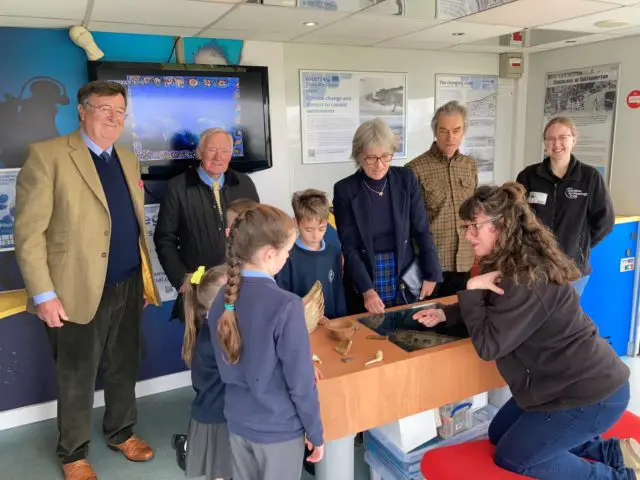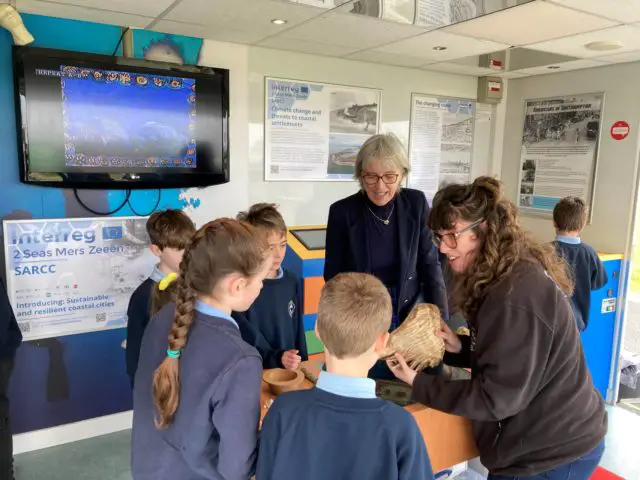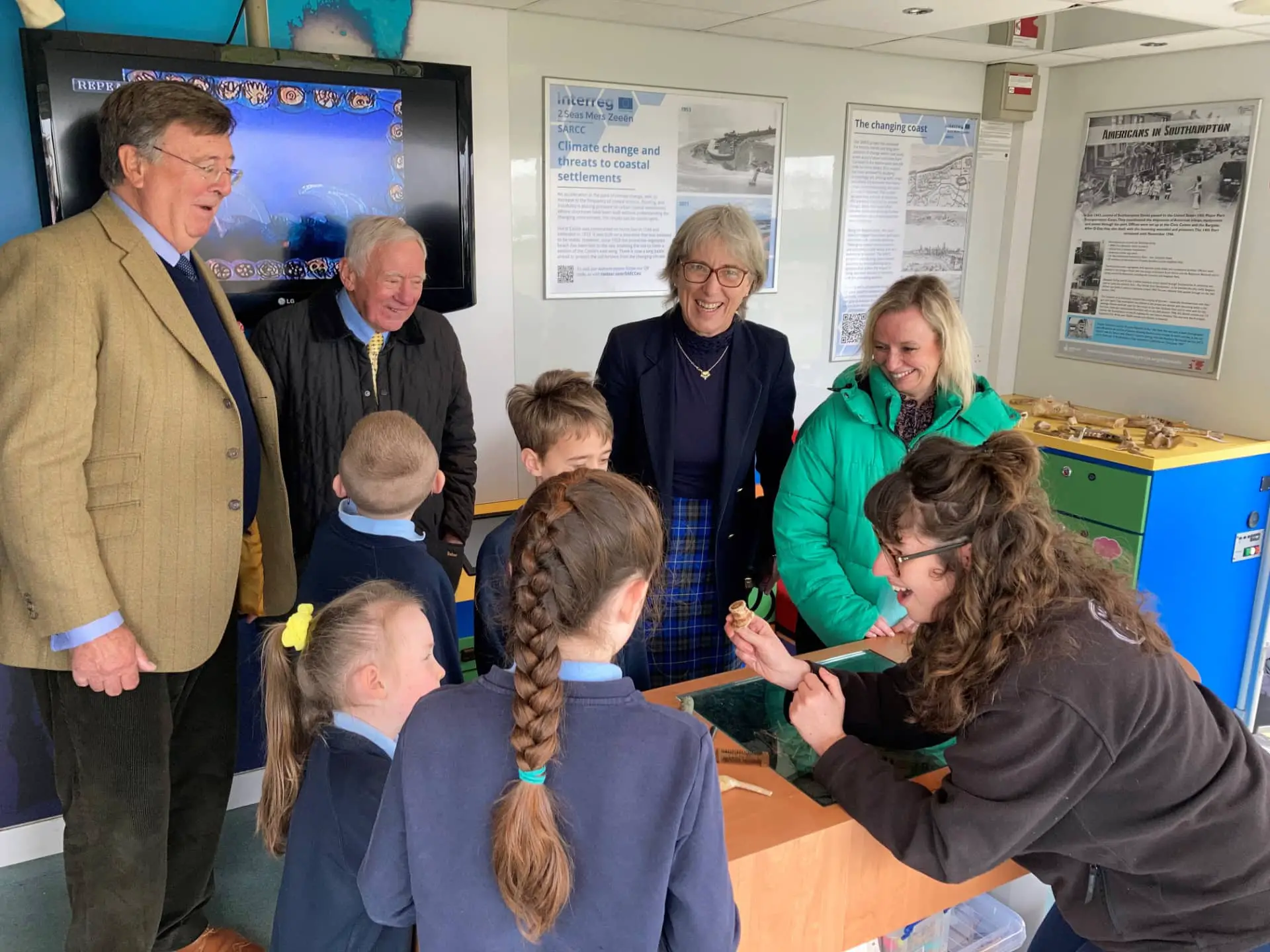Get set for an underwater archaeological adventure!
Packed with interactive videos and hands-on displays, the Maritime Archaeology Trust’s (MAT) inspiring Discovery Bus is set to make a big splash with schools and communities across the Isle of Wight this spring.
The ‘travelling exhibition’ arrived last week at the Shipwreck Centre and Maritime Museum at Arreton Barns Craft Village, where it will be used as a base for sharing fascinating maritime archaeology until 18th April.
Queensgate pupils first to visit
Among the first to get up close to real archaeological artefacts were budding marine archaeologists at Queensgate Foundation Primary School in East Cowes, who were encouraged to dig deeper into the Island’s rich maritime history.
They were joined on their voyage of discovery by MAT vice-president, Susie Sheldon, Lord-Lieutenant of the Isle of Wight.

Garry Momber, MAT director, said,
“The ‘travelling exhibition’ will inform people about their local heritage to give them a sense of ownership in their past and also about threats to the heritage, particularly relating to the changing climate.
“This project will raise awareness to encourage positive and sympathetic action.”
The Discovery Bus is a mobile education and outreach facility that enables access to hard-to-reach people and communities. Recent investigations along the shores of the Solent have identified new archaeological sites.

This heritage tells us about our past and the changing climate and coastline that is under threat.
Momber: Providing new information about past history and culture
Mr Momber added,
“Our discoveries are made as the coastline erodes.
“These sites date from over 8,000 years old through to the Roman period. Most of the material remains are wood and very well preserved because they have been protected under the silt. This is a rare resource, but rich along the Solent coastline.
“This resource provides a direct indication of recent erosion that can be dated, to tell us about past sea level rise and long-term patterns of coastal change.
“Thanks to support from local charities and the EU Interreg project, Sustainable and Resilient Coastal Cities (SARCC), it is providing new information about past history and culture, including early human dispersal, links with mainland Europe, cultural characteristics and coastal exploitation.”
Learning about threats to maritime heritage
The bus is visiting the Island as part of its 2022 tour – the first since the start of the pandemic two years ago.
It will show local communities the threats to the region’s maritime heritage and demonstrate how it can by analysed to help quantify changes along the shoreline.
For more information about the Island’s Shipwreck Centre and Maritime Museum (SWC), please visit the Website.
News shared by Isle of Wight council press office, in their own words. Ed





